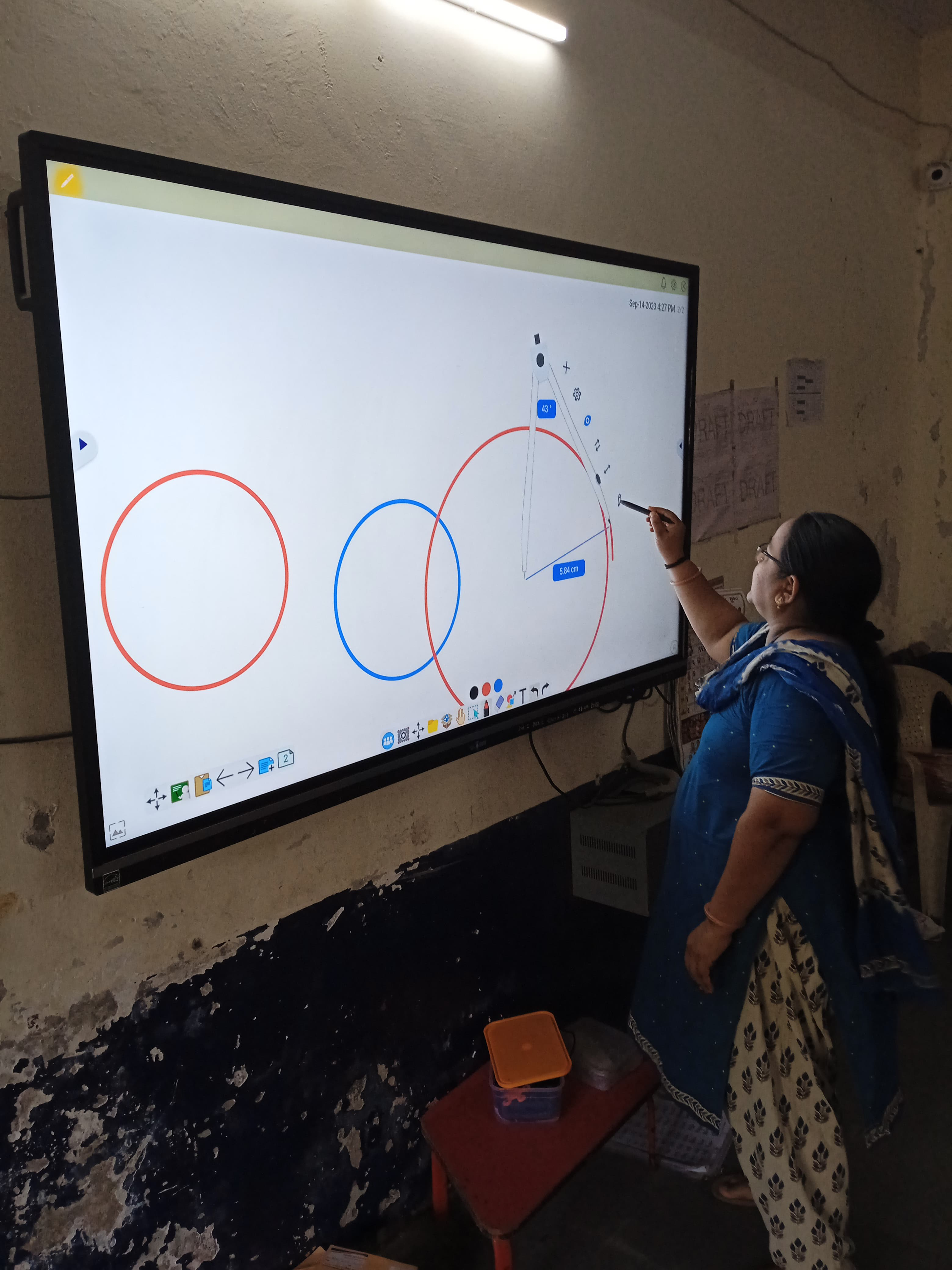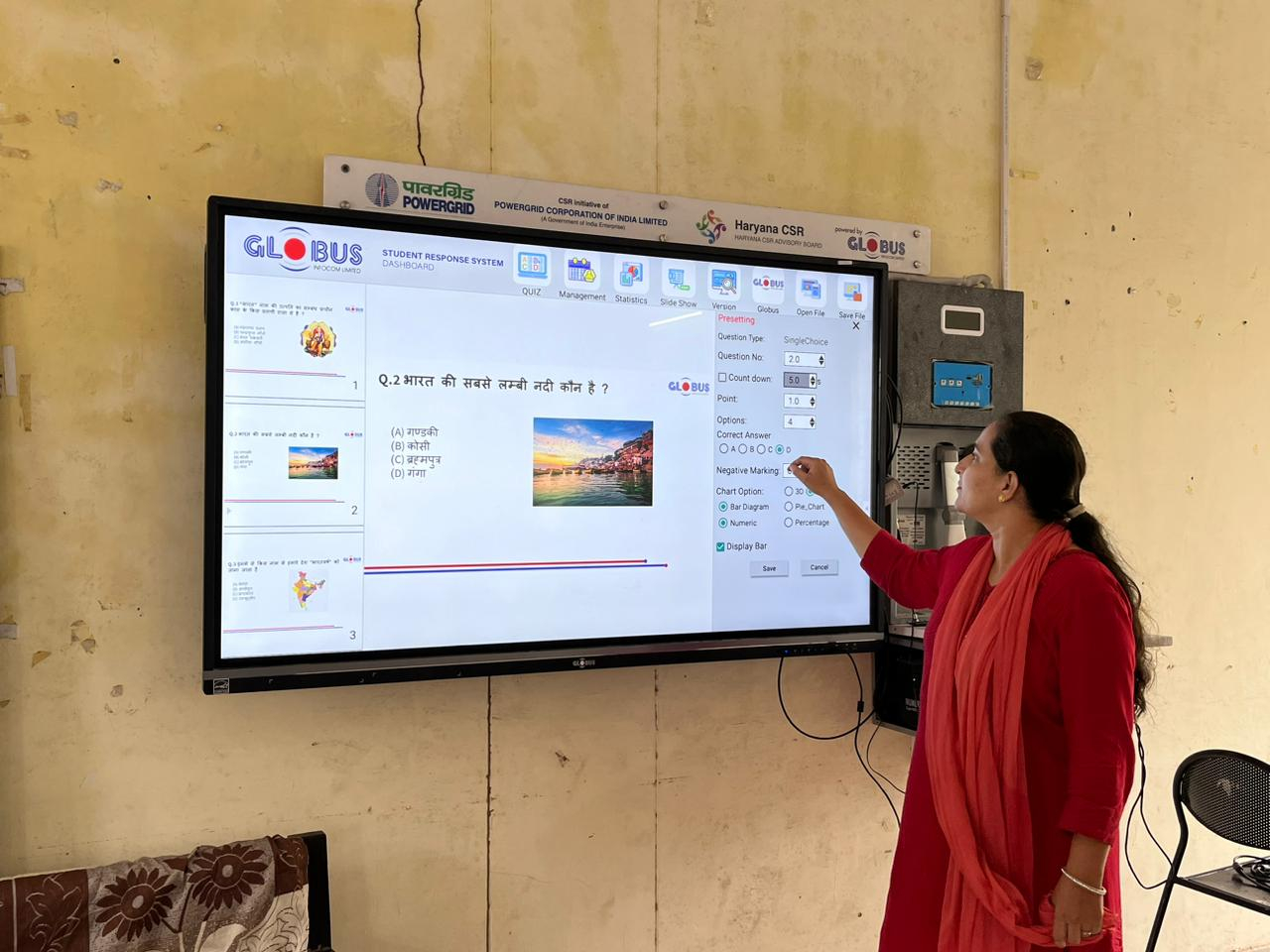- Description
-
Details
Education has seen a remarkable transformation in recent years, primarily driven by technological advancements. One of the most significant developments in the field of education technology (EdTech) is the introduction of smart classroom solutions, with the digital board at its forefront. These interactive and immersive tools have revolutionized the traditional classroom setup by seamlessly integrating technology into the learning environment. In this article, we will delve into the concept of smart classroom solutions, focusing on the digital board's key role and its numerous advantages for both educators and students.
The Digital Board: A Core Component of Smart Classrooms
-
Interactive Displays: At the heart of the smart classroom is the interactive digital board, often referred to as an interactive whiteboard or smartboard. Unlike traditional chalkboards or static whiteboards, digital boards are equipped with touch-sensitive screens that allow educators to write, draw, and interact directly with the displayed content.
-
Multimedia Integration: Digital boards support multimedia integration, enabling teachers to project videos, images, and presentations with ease. This feature enriches lessons, making them more engaging and visually appealing.
-
Digital Annotation: Educators can use digital pens or stylus pens to annotate content in real-time. This feature allows for dynamic explanations, highlighting important points, and making notes directly on the board.
-
Remote Collaboration: Many digital boards offer remote collaboration capabilities, allowing teachers and students to connect with others in different locations. This is especially valuable for distance learning and connecting classrooms worldwide.
-
Interactive Software: Smart classroom solutions include specialized interactive software that complements the digital board. This software often provides tools for lesson planning, content creation, and collaborative activities.
-
Access to Digital Content: Digital boards are linked to a wealth of digital content and resources, including online textbooks, educational apps, and web-based materials. This access expands the scope of learning materials available to both teachers and students.
Advantages of Implementing Digital Boards in Smart Classrooms
-
Enhanced Engagement: The interactive nature of digital boards captures students' attention and encourages active participation. Students can directly interact with the content, solving problems, or answering questions on the board. This engagement promotes a deeper understanding of the subject matter.
-
Visual and Multimodal Learning: Digital boards support visual and multimodal learning by incorporating videos, images, and interactive simulations. Visual aids enhance comprehension, making abstract concepts more tangible and accessible.
-
Dynamic Lessons: Educators can create dynamic lessons with digital boards, incorporating multimedia elements, live demonstrations, and real-time annotations. These dynamic lessons cater to diverse learning styles and stimulate curiosity.
-
Instant Feedback: Digital boards allow for instant feedback on assignments and activities. Teachers can provide real-time comments and corrections, enabling students to correct mistakes immediately and learn from their errors.
-
Customized Learning: Educational software associated with digital boards often includes adaptive learning capabilities. This technology tailors lessons to individual students' needs, adjusting the difficulty level and pacing to ensure optimal learning outcomes.
-
Time Efficiency: Using digital boards streamlines the teaching process. Teachers can access digital resources and multimedia content instantly, reducing the time spent searching for materials. Automated features, such as automated grading, further save time.
-
Resource Accessibility: Digital boards provide access to an extensive range of online resources, including educational websites, research materials, and interactive simulations. This accessibility broadens students' horizons and encourages independent learning.
-
Environmental Benefits: The adoption of digital boards reduces the consumption of traditional teaching materials like chalk and paper. This commitment to sustainability aligns with eco-friendly practices, setting a positive example for students.
Challenges and Considerations
While digital boards offer numerous advantages, there are challenges and considerations to address when implementing smart classroom solutions:
-
Cost: The initial setup cost of digital boards and associated technology can be significant. Schools and institutions must allocate resources for hardware, software, training, and maintenance.
-
Technical Training: Educators require training to effectively use digital boards and interactive software. Proficiency in these tools ensures that educators can harness their full potential for teaching and learning.
-
Infrastructure and Maintenance: Schools need reliable infrastructure, including high-speed internet and technical support, to maintain digital boards effectively. Routine maintenance and updates are also essential to ensure smooth operation.
-
Digital Divide: Not all students have equal access to digital devices or reliable internet connectivity. Addressing the digital divide is vital to ensure equitable access to smart classroom solutions.
-
Privacy and Security: Protecting student data and ensuring the security of online learning environments are paramount concerns. Schools must implement robust cybersecurity measures and adhere to privacy regulations.
-
Balancing Technology: Finding the right balance between technology and traditional teaching methods is essential. Educators should use digital boards to enhance their teaching practices rather than replace them entirely.
Conclusion
Digital boards are a central component of smart classroom solutions, offering a dynamic and interactive learning experience for both students and educators. The advantages of these tools are clear, from enhanced engagement and customized learning to resource accessibility and environmental benefits. However, addressing challenges such as cost, technical training, and the digital divide is crucial to ensure that digital boards benefit all students.
As technology continues to advance, digital boards will play an increasingly significant role in shaping the future of education. Smart classrooms represent not just an upgrade in technology but a fundamental shift in teaching and learning paradigms. They empower educators to create engaging, personalized, and immersive learning experiences that prepare students for success in a rapidly evolving world. In embracing digital boards and smart classroom solutions, educational institutions pave the way for a more interactive, efficient, and effective educational landscape.
Smart Classroom Images






-
- Reviews
-
Default welcome msg!

